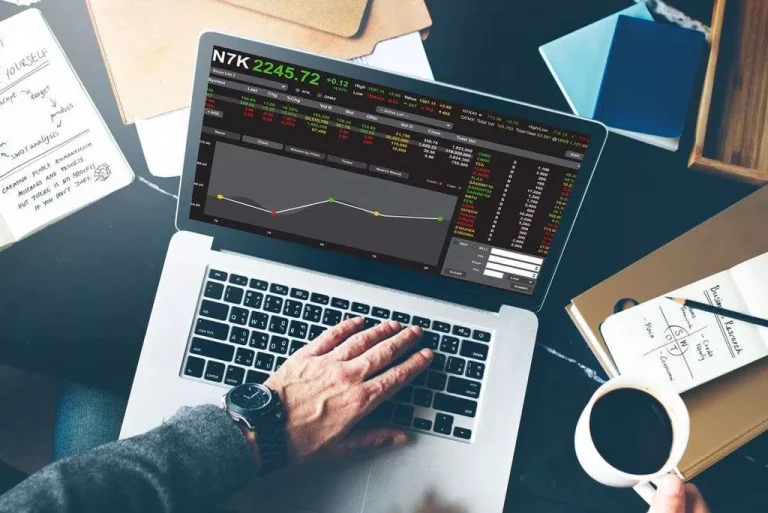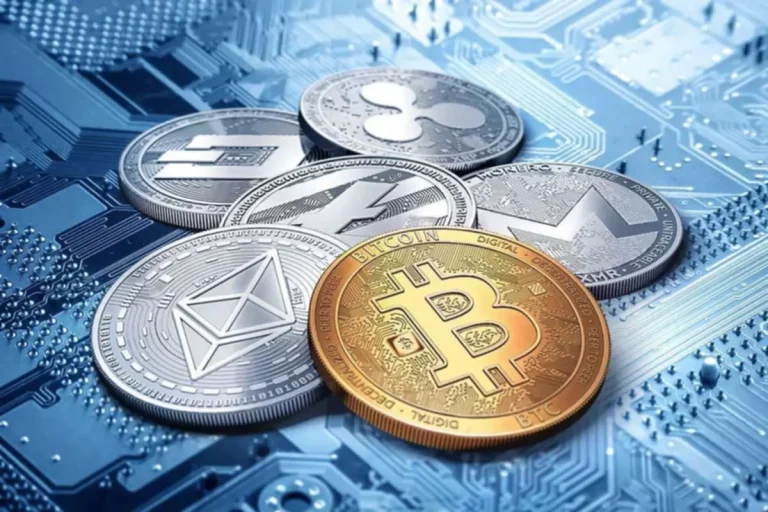What's An Automatic Market Maker Amm? Amms Explained | caraacara
Unlike conventional order books used by centralized exchanges, decentralized exchanges leverage these liquidity pools to provide instant liquidity for traders. This implies that when a dealer wishes to buy or sell a selected asset, they are interacting with this pool rather than with one other individual dealer. On a ultimate notice, it’s clearly evident that Automated Market Makers have an important function in defining the inspiration for the future of crypto trades.
Some decentralized exchanges (DEXs) facilitate trades immediately between users and wallets. You can think of these types of trades as peer-to-peer (P2P) transactions between patrons and sellers. However, DEXs that execute transactions utilizing AMMs are effectively peer-to-contract (P2C) transactions.

You may also discover the name of Curve Finance among the prime AMM protocols in current times. It is basically a decentralized trade that focuses largely on trading stablecoins. The focus of Curve Finance on stablecoins helps it in ensuring minimal charges for trades alongside lowered issues of slippage. As a end result, DEX customers can enjoy considerable levels of autonomy for initiating trades immediately through their non-custodial wallets. However, essentially the most interesting aspect of decentralized exchanges is the alternative of order-matching methods and the order guide mannequin with autonomous protocols generally identified as Autonomous Market Makers or AMMs. The result is a hyperbola (blue line) that returns a linear exchange price for large parts of the price curve and exponential costs when change charges near the outer bounds.
Primary Automated Market Makers
Since there is more USDT now than earlier than in the pool, this implies there is extra demand for BTC, making it more useful. This is the place market supply and demand act to alter the preliminary trade worth of BTC, which was equal to 25,000 USDT. As we stand on the point of a new monetary era, the function of AMMs can’t be overstated. They are greater than only a technological innovation; they’re a testament to the potential of decentralized systems and the promise they hold for a more equitable monetary future. Embracing AMMs and the broader DeFi house requires a willingness to study, adapt, and innovate, however the rewards may be important for many who are able to tackle the problem. However, like any financial software, they come with their very own set of risks and challenges.

The SushiSwap group launched what is called a “vampire attack”, whereby a protocol attempts to steal LPs from a competitor by providing better rates and rewards. SushiSwap managed to lure Uniswap LPs to the new SushiSwap protocol by providing SUSHI token rewards on prime of enticing buying and selling charges. Professional market makers could be extra comfy with a system like Kyber Network, while regular crypto users are becoming more comfy with Uniswap and Balancer. Users which may be in search of regular interest rates on their stablecoin holdings can use Curve. The protocol’s token, BAL, is distributed by the proportion of liquidity provided to the permitted token pools.
This liquidity pool serves because the central mechanism during which property are saved and traded. The devised technique to ensure the constant move of belongings into the liquidity pool entails transaction charges, taken every time a digital asset is traded. This customization is essential for crypto exchanges, DeFi platforms, and DEXs, the place the market’s dynamism and complexity demand more than just algorithmic predictions. Unlike AMMs, which follow pre-set rules, Orcabay’s human-driven insights enable for strategic adjustments primarily based on rising developments and anomalies. This strategy ensures extra secure and environment friendly markets, enhances person belief, and mitigates slippage, in the end benefiting all events inside the blockchain ecosystem.
Learn Extra Of Our Articles:
There are additionally plans to separate the fee between pool members and a protocol fee (0.25% pools and 0.05% protocol). Trades that are routed by way of multiple pool are accompanied by a 0.6% payment so as to complete the trade since every pool in the protocol costs its own charge. Based on these predictions, they proactively tweak their strategies, guaranteeing that the current market price stays as steady as attainable even earlier than any important change happens. The major benefit lies in their ability to dampen the opposed impact of huge or sudden trades, which might disrupt market equilibrium.
This types the spine of DEX buying and selling, where no particular person use is required to prove eligibility to trade. Large orders could mixture liquidity from multiple reserves, including bridge reserves, so true charges can also be more or less as a result of bridge reserve fees being charged at the originating community. The Kyber Katalyst improve allows dapp developers to add a customized unfold to the tokens within the pool. For example, a wallet developer can add their own zero.1% on prime of the zero.2% network fee and maintain the difference.
Why Use Amms?
Oftentimes, the optimal route can include many hops and sophisticated splitting, making it a particularly onerous downside to solve. Odos.xyz is a new DEX aggregator that is prepared to search extra complicated solutions than existing platforms, allowing for atomic multi-input trades and better rates for its users. Also aiming to increase liquidity on its protocol, DODO is using a model known as a proactive market maker (PMM) that mimics the human market-making behaviors of a standard central restrict order book. Ultimately, this facilitates more efficient trading and reduces the impairment loss for liquidity suppliers. Using a dynamic automated market maker (DAMM) model, Sigmadex leverages Chainlink Price Feeds and implied volatility to help dynamically distribute liquidity along the worth curve. By incorporating a quantity of dynamic variables into its algorithm, it can create a extra strong market maker that adapts to changing market conditions.
How a DEX handles the flow of trades and maintains stability is dependent upon the algorithm employed by the AMM itself. These are available a quantity of forms, however by far the most common within the so-called fixed product automated market maker (CPMM). By offering stablecoin only liquidity pools the trade is ready to full giant trades with low slippage due to its focus of deposits in its restricted quantity of pools.
As the DeFi area continues to evolve, it is expected that AMMs will play an much more vital role in shaping the method ahead for finance. AMMs have already established a crucial position within the Decentralized Finance (DeFi) area and are poised for continued development and evolution. Future developments may include the expansion of asset support, the introduction of revolutionary features, and elevated integration with different DeFi protocols. These developments are expected to further contribute to the broader decentralization and innovation tendencies within the cryptocurrency ecosystem. Another example of an automated market maker (AMM) is PancakeSwap, the primary AMM on Binance Smart Chain (BSC). However, PancakeSwap boasts numerous features, including a lottery, non-fungible tokens (NFTs), and a predictions market.
- However, it doesn’t supply infinite liquidity, a limitation in sure trading scenarios.
- The devised strategy to make sure the consistent move of belongings into the liquidity pool includes transaction charges, taken every time a digital asset is traded.
- This process of offering liquidity ensures the well being and robustness of the liquidity pool’s whole belongings in the decentralized exchange.
- This mechanism incentivizes arbitrators to actively trade on well-liked pools to keep the prices aligned with the exterior markets.
Synthetic property are a means for AMMs to use good contracts to virtualize the AMM itself, making it more composable. An implementation of this can be seen in digital AMMs (vAMMs), the place market members commerce utilizing artificial tokens (vDAI for DAI, vETH for ETH, and so forth.) while their actual crypto is locked in a smart contract. Through oracles, DEXs also can focus liquidity within these worth ranges and improve capital efficiency. This also reduces the risk of slippage, since costs are more in sync with other markets. For instance, a hybrid mannequin can mix the CSMM variant’s ability to reduce the impact of enormous trades on the entire pool with the CMMM variant’s performance to allow multi-asset liquidity pools.
By utilizing liquidity swimming pools instead of order books, AMMs facilitate trading by making certain there is always a counterparty ready to fill a trade. This not only streamlines the buying and selling course of but in addition enhances liquidity, making markets more environment friendly and accessible. Liquidity, within the context of asset trade, refers to the ease with which an asset may be transformed to another asset, typically a fiat foreign money, without impacting its market worth.
In this fashion, the amplification issue allows a tradeoff between capital efficiency and additional portfolio risk. Generally, a high amplification factor can work nicely for stable pairs however turns into riskier the more unstable https://www.xcritical.in/ a pair gets. Chainlink Price Feeds already underpin much of the DeFi financial system and play a key role in serving to AMMs precisely set asset costs and increase the liquidity obtainable to traders.
Liquidity providers, typically abbreviated as LPs, are the spine of those liquidity pools. They may be individuals or larger entities that supply the assets to these pools. Liquidity denotes the ease with which property may be traded with out inducing significant value adjustments. A market with extra liquidity ensures that transactions may be executed seamlessly.
What Are The Totally Different Automated Market Maker (amm) Models?
They are instrumental in reshaping the landscape of the financial sector by offering an different alternative to traditional market buildings. Unlike typical financial markets that rely on order books and market makers to facilitate trading, AMMs utilize algorithms and smart contracts to enable asset buying and selling. This is achieved by sustaining liquidity pools—reservoirs of tokens that customers can trade against. Traditional AMM fashions necessitate massive liquidity reserves to match the value Automated Market Maker influence stage of an order book-based exchange. A significant portion of this liquidity turns into obtainable solely when the pricing curve turns exponential, meaning that the majority of it stays unused by rational traders because of excessive price impacts. The domain of Automated Market Makers (AMMs) encompasses varied fashions, primarily characterised by how they preserve the stability of belongings and decide costs.
Slippage Risks
Always do your personal research (DYOR) and never deposit more than you’ll be able to afford to lose. Currently, liquidity suppliers can earn SNX and REN tokens by offering liquidity to the sBTC pools. When liquidity providers deposit their stablecoins into the pool it’s mechanically traded into an equal share of the pool tokens.
If the loss is bigger than the gain obtained via amassing buying and selling fees, the liquidity provider would have been higher off just HODLing the tokens. In AMM platforms, transactions are clear and broadcasted to the community earlier than being confirmed. This transparency could be exploited via ‘front-running,’ where an individual sees a pending transaction and pays a higher fuel charge to get their transaction included within the blockchain first.
Balancer
To achieve this, these fashions deploy intricate algorithms tailored to trace and respond to market dynamics, significantly when dealing with belongings which would possibly be pegged to a secure value, corresponding to fiat currencies. Within the huge DeFi terrain lies an array of investment methods, with yield farming emerging as a prominent one. Yield farming includes strategically allocating capital throughout different buying and selling pairs to maximise returns.
An different method to achieve higher capital effectivity is to make use of virtual reserves, an idea first launched by KyberSwap [14]. Virtual reserve AMMs utilize the CPMM model but multiply the real balances of each asset by an amplification factor. The result is that a much higher capital efficiency may be provided over the CPMM (bringing in more volume and payment revenue), but the market maker loses the CPMM’s capacity to never run out of either asset.
